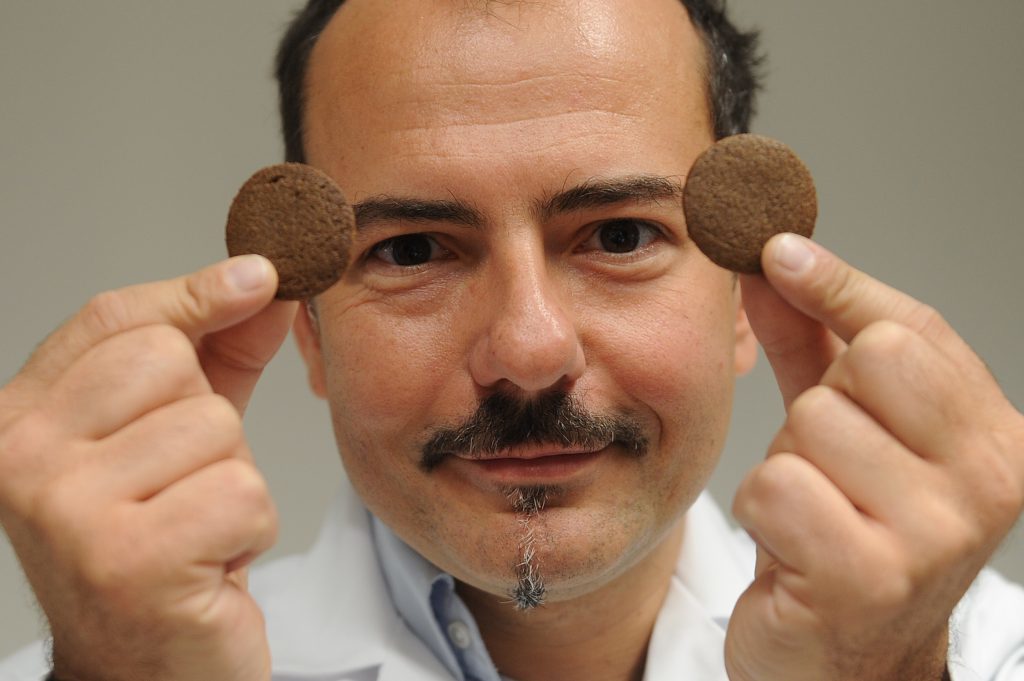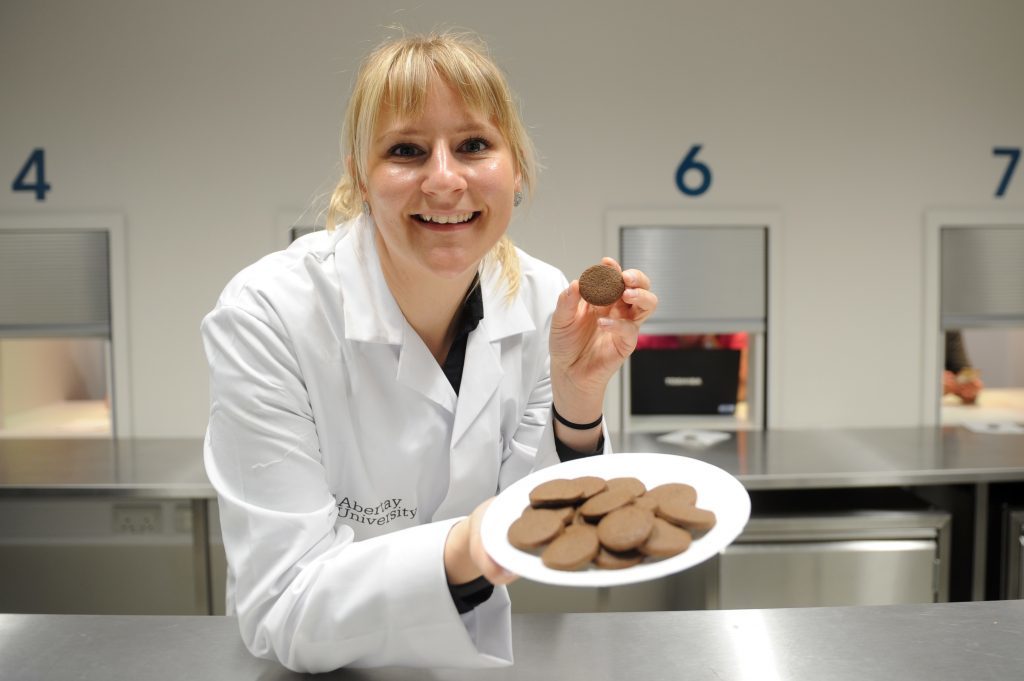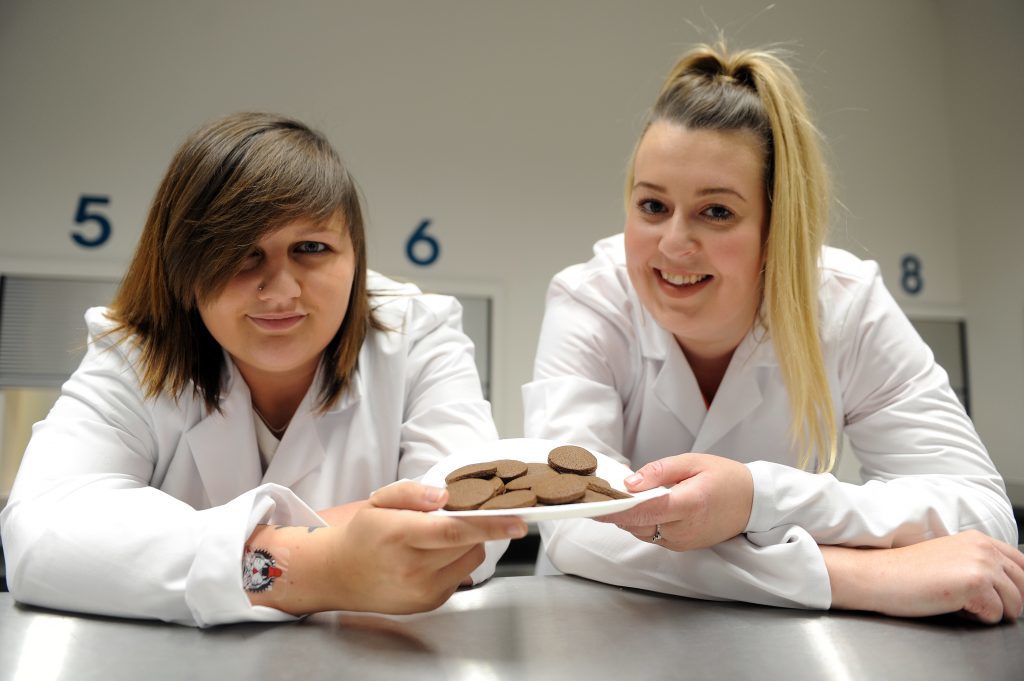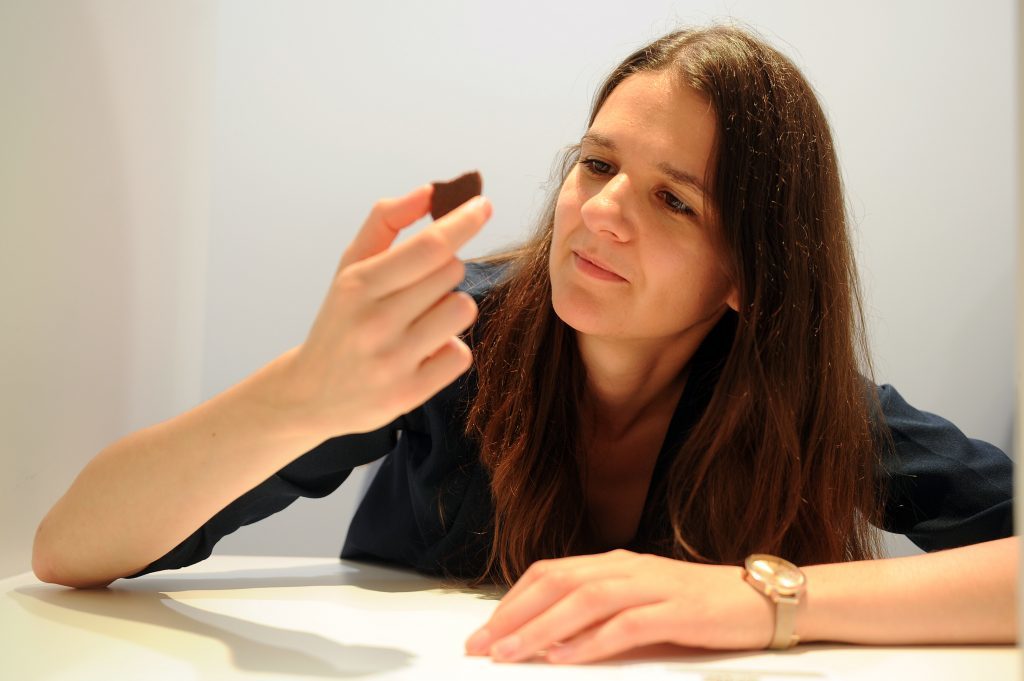Dundee foodies tried out insect biscuits as part of a research and development project at Abertay University.
The consumer challenge was devised by a trio of Masters students, who have created what they believe is the perfect tea break snack – using the bodies of ground-up crickets.
Members of the public were asked to taste the crunchy treats, which had been baked with cocoa powder and a hint of orange.
The project aims to find out what it would take for Scots to accept insects as a legitimate source of nutrition.
Student Anja Sieghartsleitner, who is leading the study with classmates Sara Duthie and Emma Morrison, said western attitudes towards food must change if the world is meet the food demands of a growing population.
Anja added: “Insects are a lot more sustainable than other sources of meat like, beef, chicken and pork.
“They use a lot less land and water and you can eat the whole insect, not just part of the animal.
“You may not want to eat a whole cricket, but if it’s hidden away in flour, or in a biscuit, you may be more likely to accept it.
“The flour is already for sale and there are a handful of companies that have started out in this market.
“The UK, the Netherlands and Belgium are more advanced in this area than the rest of Europe and it will take some time for this to grow.
“If we are seeking to feed nine billion people by 2050 then we have to change our eating behaviour, as the amount of meat we eat is not sustainable.
“You have to make products look and taste really appealing to consumers to hold their interest.”
The testing was carried out in Abertay’s new state-of-the-art £3.5m science labs which boast Scotland’s only industry standard Consumer Testing Lab, featuring climate-controlled booths.
Project supervisor Dr Alberto Fiore of the Division of Food and Drink added that fighting against the reluctance of the western population to eat inspects was a challenge to be overcome.
Nadia’s Taste test
At first I was apprehensive about trying the cricket cookies, imagining some sort of gruesome I’m a Celebrity-esque challenge.
However when I was handed the plate, it turned out to contain an innocuous-looking brown biscuit with no obvious signs of creepy crawlies.
The crickets had been ground-up into a flour, which was then mixed with traditional ingredients such as eggs, butter and cocoa.
That helped to get over the psychological hurdle of eating insects and I bravely bit off a large chunk.
Initially the taste was pleasant – the cocoa was the predominant flavour, as well as a hint of orange – and the texture was no different to standard biscuits.
The after-taste was when it all fell apart for me. It was bitter, with a metallic hint – just how I imagined crickets would taste, which made me very aware of the biscuit’s contents.
If these were sold in a supermarket I’d need some persuasion to buy them in their current form, but if there was any way to mask the after-taste I’d be on board.
We do need to make more sustainable food choices and insects already eaten in other countries around the world – so, why not here?












